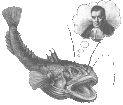UW Aquatic & Fishery Sciences Quantitative Seminar
Kyle Wilson
PhD Student, University of Calgary
Life-history and management of western Canada's lake trout
Abstract
Lake Trout Salvelinus namaycush are one of the only wild game fishes that persist in deep, cold waters common throughout northern Canada. Their unique life-history traits (e.g., slow growth, low natural mortality, late maturation, and low reproductive rates) adapted to low-productivity environments make them highly susceptible to being overfished, however different environments appear to afford different life-history strategies than others. The degree that such traits respond to environmental variation and tradeoff against other traits can influence the evolution of tradeoffs across a landscape, and, ultimately, influence population ecology and appropriate management targets. Our objectives were to characterize life-history traits important to Lake Trout production across British Columbia and Yukon using a suite of Bayesian hierarchical models, including a biphasic somatic growth model. We use a hierarchical regression and parameter inclusion approach to link these traits to environmental clines across the landscape to determine how these correlated traits vary with environment. We then follow-up with this approach to determine components of mortality in the lake trout fishery using hierarchical catch curves linked to a compensatory life-history model. Overall, growth-associated traits were influenced by environment, and substantial tradeoffs between growth, maturity, reproduction, and survival were evident across populations. Generally, the pattern of these trait-environment relationships were consistent with life-history predictions of a plastic density-dependent and density-independent ecological response to environmental variation, but local adaptation cannot be ruled out. Presuming a plastic response to exploitation, this life-history approach makes explicit predictions of fishing mortality reference points (e.g., FMSY) highlighting that trait-environment associations can help guide management strategies.

